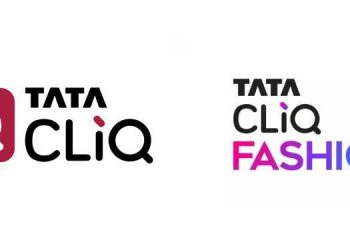Centuary Mattresses has come a long way since its inception in 1988. How has the company grown over the years and how has the entire journey been?
I am actually the third generation in the business. This business was started by my grandfather in 1988. We are very proud of the journey because we are one of the most stable brands in the category. We’ve enjoyed a consistent compounded annual growth rate over 35 years of close to 20 pc, which is not something which many family-owned businesses can claim in any industry.
I have been a part of this journey since 2008. We’ve come a long way in terms of starting from mattresses, diversifying into polyurethane foam, getting into exports and getting into the online space. It’s been an exciting journey overall . And it’s an exciting category to be working in.
Centuary offers a wide range of sleeping solutions. Tell us about the product portfolio.
Centuary is a fully integrated manufacturing company. We make all our mattresses and our mattress components and materials in-house. We are not driven by what is readily available in the market because we manufacture everything in-house. We invest heavily behind bringing new trends and technologies to India and bringing the best in terms of materials which are being developed.
We are diversified in terms of product portfolio. Our starting price points go from about Rs.5,000 to 6,000 a mattress right up to a lakh rupees a mattress. And our average selling price is somewhere around Rs.20,000. In terms of consumer trends, post-Covid, the demand for orthopaedic products and for health-oriented offerings has gone up. So what we’ve done is, we’ve re-purposed all our mattresses and made them antimicrobial.
There’s a lot of product innovation which happens and consumer demand in India is something which keeps changing and keeps changing quite fast. Being a fully integrated manufacturing setup, we are able to adapt to it, maybe faster than others. That is one of the leading reasons for our success in the category over so many years.
What are the top-selling categories?
As on date, our top three products are from the orthopaedic mattress segment, two of which are coir-based products Spine Support and Ortho Active, and one is a recently launched foam product called Posture Pro. All of them are in the sweet spot of Rs.20,000 to 35,000 which we find to be more accessible for consumers. And all of them come in 6 inch and 8 inch thickness variants.
What is Centuary Mattresses’ share and how is it positioned in the market? What is the future target?
As per estimates by Centuary as well as the Indian mattress industry association, the industry in India is worth around Rs.10,000 crore. Roughly 40 pc of this (Rs,4,000 cr) would be the organised segment and the rest of it would be the unorganised or unbranded segment which also includes your cotton gaddas. Amongst the organised segment, Centuary firmly occupies a top three kind of position with a 10 pc market share. And if you were to look at our geographical footprint, we are pretty much spread across three-fourths of the Indian territory, predominantly focused on South and Eastern markets along with our presence in Western and Central India.
Centuary has sales offices located across South, East and West India. Do you plan on expanding your footprint in the North?
We are not present in the North. We are present across the rest of the country. At some point we intend to (be in the North). As I mentioned earlier, we are a fully integrated manufacturing company. We would like to set up a capacity and infrastructure somewhere closer before we venture further up North. Mattresses and foam are both voluminous products and also highly service oriented. The way Centuary has gone about over the last 35 years is to get into a market in a full-fledged manner and occupy a top three position in that market. So we’ve got those plans in place. Maybe a couple of years down the line is when we feel we’ll be ready to get into the North.
Tell us about your sleep innovation products like Copper-Gel Technology Mattress, Natural Latex Mattress and Micro Spring Mattress.
Copper-Gel is particularly interesting and exciting because Centuary was the first one to bring that from the USA to India. There are primarily three or four advantages of that product. So, firstly, copper is a natural material and post Covid, we have all come to understand and realise the advantage of natural materials. Copper is also a conductor of heat. When we look at foam mattresses or memory foam-based products, while they’re very comfortable, they tend to get hot very, very quickly. Consumer feedback has been that they get hot and sweaty while using these products, particularly in the Indian climate. The use of copper on the top layer helps spread the heat, dissipate the heat and provides a cool sleeping solution.
The third benefit of course being that copper is also antimicrobial and antiviral in nature. We’ve heard everyone’s grandmother say that you should drink water from a copper jar. So we thought why not bring that technology to a mattress? Because at the end of the day you’re sleeping on a mattress. If it isn’t antimicrobial and antiviral, it would be a hot bed for infections. Putting together all this research, we were able to launch Copper gel-infused foams in our mattresses and those have received a tremendous consumer acceptance and response. Posture Pro and Ortho Active have been adapted with copper gel technology.
On the other side, we have been also innovating a lot with latex because it is a natural material and it comes from the rubber tree. One of the latex-based products is Natura Latex, which is a coir-based latex. That’s a 100 pc natural mattress. Coir comes from coconut trees and latex comes from rubber trees. And the fabric used on the mattress is an organic cotton fabric. So we’ve got a whole natural theme and concept around that. Even though it’s positioned at a premium price point (above the Rs.50,000 price bracket), it is one of our top selling products.
These are some of the innovations we have taken up in the last one year. We intend to continue bringing new products like this to the market.
I think it might also be worth touching upon Beddy, which is our specialised baby mattress offering. Again, 100 pc natural because as we all know, kids need to stay away from synthetic or chemical-based materials.
Beddy is again a 100 pc natural concept of coconut fibre, latex foam, organic cotton fabric and waterproof, ticking all the right hygiene parameters. Beddy’s been in the market for a couple of years now. It’s carved out a niche at the high end of baby products. We find that more and more brands would now have to play catch up because at the end of the day kids need to have a specialised sleep solution. The same formula which works for an adult may not work for a baby. That’s been another exciting product innovation from our stable over the last few years.
How is the kids and baby vertical faring? How much does that contribute to the revenue?
It’s somewhere below 5 pc of our total revenue. It’s still not very significant because, in India, I think the cultural nuance is that parents tend to co-sleep with their baby. Typically the baby is made to sleep between the mother and the father or right next to the mother, whereas all the research across the globe, even by the American Society of Pediatricians, suggest that it’s good for the mother and the parents as well as the baby to have an independent sleeping solution. So the baby crib could be in the mother’s room but needs to be independent of the mother’s bed, so the mother can also sleep properly. The baby’s sleep requirements are different from the mother’s sleep requirements. So the journey that Centuary has undertaken, apart from having launched the best product in its category, is also to educate parents and consumers and it’s been a slow ramp up. What we find now is that this change in culture or mindset is slowly but surely starting to come in.
Centuary Mattresses also offers Sleepables Accessories. How much does that contribute to the total revenue? Which is the top-selling accessory?
In the Indian mattress category, accessories have not been given the due importance that you see in the Western countries. For instance, in Europe and North America, accessories contribute nearly 30 to 40 pc of the bedding industry, whereas in India that figure may be as low as 5 pc. In Centuary’s case, we have been one of the first to focus on the accessories segment. And we’ve launched our own brand extension Sleepables, which contributes about 10 to 12 pc of our revenues and is growing at a much faster pace.
We’ve curated a collection of accessories around pillows including pillows, neck pillows and body pillows, and backrests, cushions, mattress protectors, mattress pads and folding mattresses. Together we anticipate that it might grow to a contribution of up to 20 pc of our revenues in another two years.
Century is present in 18 states. Tell us about your offline channel of sales and retail presence.
As I mentioned, barring up North, we are present across the rest of the country. We are currently expanding aggressively in terms of adding to our network, particularly in the East which is your North-Eastern States and West Bengal, Bihar and Jharkhand. We have our manufacturing footprint in Hyderabad as well as Bhubaneswar, so we’re tapping into the region from Bhubaneswar. Subsequent to which we will be looking to set up a facility somewhere in the West or North, to tap into the Northern markets.
As of now, there are around 5,000 MBOs (Multi-brand Outlets), 500 EBOs (Exclusive Brand Outlets) and one Experiential Centre that we opened in Chennai recently. Over the next three years, we aim to increase the number of EBOs to 1,000 and grow the MBO count to approximately 10,000. Additionally, we intend to establish 100 Experience Centers within the same timeframe.
The idea is to expand both horizontally, in terms of going to more states and more geographies, and also vertically, penetrating into tier 3 and 4 towns.
We are seeing a lot of revenue growth from non-metro, non-tier one towns. That’s where a lot of retail expansion would happen.
How much of the sales comes from the EBOs?
Our entire offline sale contributes to about 90 pc of our branded sales. Roughly 60 pc comes from EBOs and 40 pc from the MBOs.
Are strategies any different for the smaller cities and towns? What is the current share of sales from smaller markets?
Metros and tier one cities put together contribute roughly 50 pc of our sales. And the balance 50 pc comes from tier 2, 3 and 4. In fact, even in our online sales we see a lot of demand coming from there.
We’ve got a basket of products. The price points moving in metros in tier one cities are slightly higher, vis a vis the smaller towns. We’ve got a curated product offering for tier 3 and 4 towns at lower price points. Obviously, we want to supplement that with appropriate marketing campaigns. So our marketing strategy is also slightly different for a metro city versus tier 2 or 3 town.
How much do exports contribute to the total revenue? What are the top international markets for Centuary?
We are the largest exporter of mattresses and mattress components from India by far, over the last six to seven years. In fact, we were the first ones to begin exports out of India. Our footprint in the export market is all over the globe – Europe, Asian countries, Middle Eastern countries, USA and South-East Asia. We cover the entire geography and exports constitute about 20 pc of our total business.
Our strategy is that we focus on our branded offering under the Centuary brand for the Indian market and in export markets we are working with strategic private label partners. For instance, we have a very strong collaboration with Ikea for supply under their brand name, not just to their Indian stores but also their stores all over Asia.
Reportedly, the brand had a target of 35 pc year-on-year growth, with offline sales growing by 30 pc, online by 150 pc and exports 50 pc. Was the target achieved?
We were able to do that in the three Covid years – 2020, 2021 and 2022. What we are finding since the second half of 2022 is that the export part of the business has not been growing as much. Certain demographic factors have led to an overall slump in demand and performance in not just Europe, but the USA and even other Asian countries. Fortunately the Indian economy has been more or less insulated. We are pretty close to the targeted growth numbers as far as our offline and online business go. We might be flat in the current year in the export business. But the rest of the business seems to be going on track.
Centuary aspires to become the number one mattress brand in India by 2025…
Well, we have taken that aggressive target and we are working towards that. I would not like to comment beyond that. Hopefully, we should be able to work on achieving that aggressive target. But yes, we are very much poised towards that goal and focused towards that.
Also, the stated target is to have a turnover of around ₹1,800 cr by 2025. How is the brand planning on achieving that?
As I mentioned, retail expansion is a key driver. We haven’t spoken much about the online business but we also expect online to play a particular role in this growth. Three years back when I went on record to say what our vision for 2025 was, at that point online was contributing probably around 3 to 4 pc of our revenue. Today online is at about 10 pc contribution and I anticipate that by 2025 it will be around 20 pc contribution.
There are a lot of plans in place for product line expansion, retail expansion and also online penetration. We are looking at achieving that number with all these levers.
How is Centuary differentiated from other players?
Firstly, there are very few players in the market with what I call a legacy brand. Centuary is a 35-year-old brand. There are very few legacy brands left in the market. You can count them on your fingertips. There are even fewer brands who have manufacturing capacities and capabilities. So post Covid, particularly, with the online kind of propensity of consumers, there have been a lot of online-first brands in the mattress category as well. Most of them do not have manufacturing or product design capabilities. Centuary is very focused on being a product-first, product leadership kind of brand, whereas most of the competition in the last few years has been from what we would call marketing-first brands. They don’t really have manufacturing or product design capabilities but are leveraging the digital marketing tools available. What we find is that the journey of a lot of these brands seems to be a bit short lived. Centuary being a legacy brand, we project over five years, 10 years, not just over the next couple of months.
And that is whether we raise funds or not – that’s the other differentiator. Centuary is probably the only mattress brand that is not leveraged. We’ve not gone public. We’ve not brought in private equity. We continue to be closely controlled and fully internally funded for all our expansions and new factories. There are many ways in which we stand out from the crowd, whether it be our holding structure, our funding structure, our product capabilities or whether it be our profitability. The fact is that we are one of the few profitable brands in the Indian mattress industry – which is why we’ve been around for 35 years and we wish to be around for another 35 years.
Yes, there has been a deluge of D2C mattress brands. Is the space now more competitive? What has been the impact on Centuary?
Definitely, the competition from D2C brands has meant that even legacy brands like Centuary have had to sharpen our offerings. In particular, price points have been brought down overall. That has meant that a lot of new consumers have been brought in. While we’ve had to sharpen our product offerings and price points, our overall base has not eroded. And our base of consumers continues to grow.
It’s just that, maybe, the entry level consumer now goes and shops at one of these D2C startups. In a couple of years, when they are ready for an upgrade or a replacement, they come to a legacy brand like Centuary. It’s just that the demographic of our consumer has evolved slightly on account of the competition. But overall, the category has fortunately grown, and there has been enough space for everyone to coexist.
Tell us about the marketing strategies and campaigns at Centuary. Is the company heavy on digital? What is the media mix?
We are heavy on 360-degree marketing. We invest quite high on out-of-home as well on TV, on big ticket properties like, say, Bigg Boss at the regional level. We invest in out-of-home during Onam season in Kerala and during Durga Puja in Odisha and West Bengal.
We used to have Sania Mirza as the face of the brand for an extended period of four years. And recently we’ve onboarded PV Sindhu – again with the connection of sports and performance to sleep and also the (shared) Hyderabad connection with Centuary. We have lined up some exciting marketing campaigns, both for our online portfolio as well as our offline portfolio. You will be seeing a lot of these campaigns being rolled out in the next couple of months in the festive season. We invest anywhere close to 8 to 10 pc of our revenues in marketing across the 360-degree spectrum.
(First published by The Free Press Journal BrandSutra. Content powered by MediaNews4u.com. Feedback: [email protected])

















